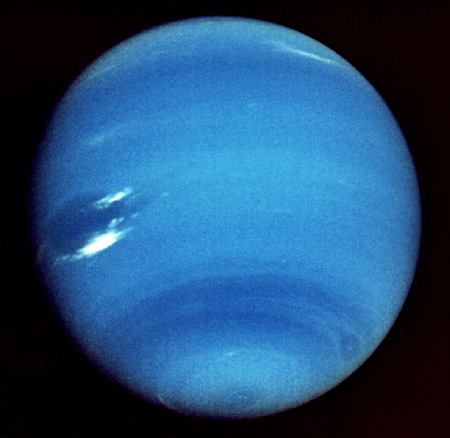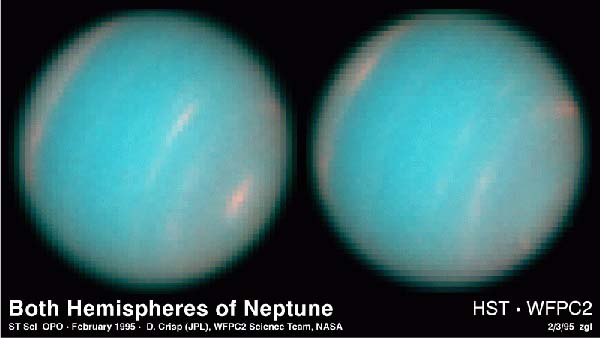|

QueSPER Research Projects
Planets in the Solar System
Neptune
Neptune Nepture Nepture
QueSPER Research Plan and
Note-taking Worksheets
Neptune
Printout
*One AU is the distance from the center of the Earth to the center of the
Sun.
 |
How far is
Neptune from the Sun?
 |
Neptune is the
eighth closest planet to the Sun. |
 |
Neptune
is almost 2.8 billion miles or 4.5 billion kilometers from the Sun.
|
 |
Neptune is 30.06 AU* from the Sun. |
|
 |
How big
is Neptune? (What is its diameter?)
 |
Neptune is
30,764 miles or 49,528 kilometers in diameter. |
 |
Neptune is
about 4 times larger in diameter than Earth. |
|
 |
What is
Neptune like?
 |
Neptune has a
blue-green color because of the methane gas on the planet. |
 |
Its surface is
very stormy. Winds top 900 miles an hour and storms are similar to Jupiter's
"Great Red Spot." |
 |
Neptune's
atmosphere is made of hydrogen, helium, methane, and ammonia.
|
 |
Neptune is
very cold at -353° F. |
 |
Neptune has
thirteen moons (12/2006). Nine have names. |
 |
Neptune's
moon Triton is unique in the Solar System because it is the only large
moon that orbits in the opposite direction to its planet's rotation. |
|
 |
Why is this
planet named Neptune?
 |
Neptune is named
for a Roman god of the sea. |
 |
Neptune was the
first planet to be discovered using mathematical prediction.
Neptune was discovered on September 23, 1846 by
Johann Gottfried
Galle, of the Berlin Observatory, and Louis d'Arrest, an astronomy
student, through mathematical predictions made by Urbain Jean Joseph Le
Verrier. |
|
 | Can we see Neptune in the
night sky?
|
*One AU is the distance from the center of the Earth to the center of the
Sun.
Information on this page was taken from the following websites:
Links to Other
Sites
Books and References
 |
| Time for Kids Almanac 2003 with
Information Please. NY: Time for Kids Books, 2002. |
RL 4.5 |
Dewey 031.02 |
|
 |
| Farndon, John. The Giant Book
of Space. Brookfield,CT: Copper Beech Bks, 2000. |
RL 4.5 |
Dewey 523.4 |
|
"The Solar System 12/2006: 8 Planets; The New Cosmic
Order." Map Insert. National Geographic Magazine. Dec., 2006.
Other Links to Sites
The-Solar-System.Net
The Nine Planets - Neptune

 to QueSPER Online to QueSPER Online

|
![]()
 Nepture
Nepture
![]()
![]()
 /
/